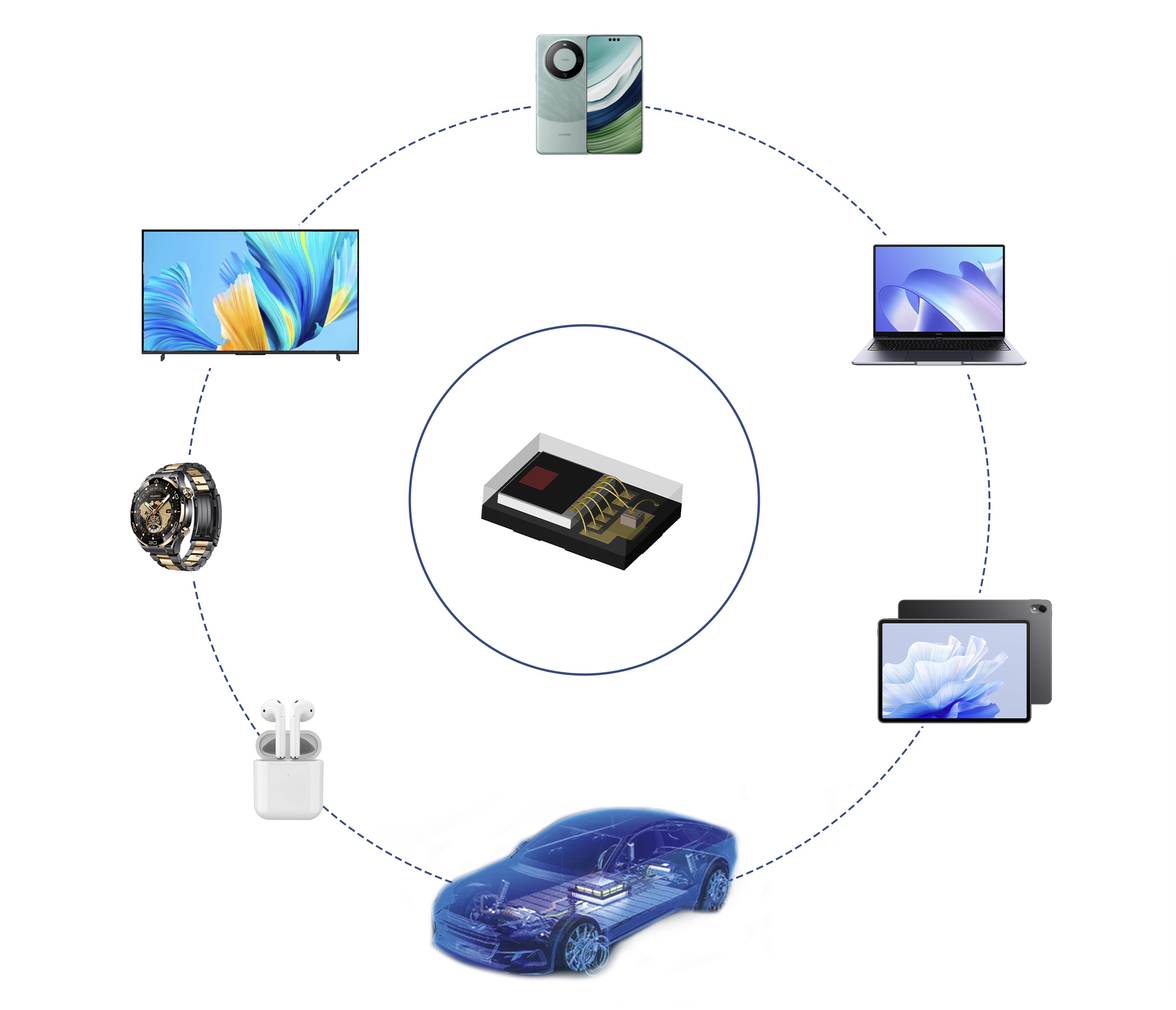
Optical sensors can be widely applied to various fields, such as smart wearable devices, smart industry, intelligent transportation system, smart grids, etc. According to Research&Markets’s data and forecasts, the global optical sensors’ market scale in 2022 was $2.58 billion and is expected to reach $4.25 billion in 2027, with a CAGR of 10.5%; and according to QY Research’s data and forecasts, it was $282 million in 2022 and is expected to reach $419 million in 2029, with a CAGR of 6.3% (2023-2029).
Nowadays, the optical sensor market is dominated by European and American manufacturers, in some consumer electronics markets, Taiwanese manufacturers holding a certain share. With the increase in downstream demand and the growing industry emphasis , domestic companies are actively expanding in the high-end sensor field.
Optical sensors utilize the properties of light and its interaction with matter to convert light signals (infrared, visible, and ultraviolet radiation) into electrical signals, completing the transmission, processing, storage, display, and recording of information.
The ambient light sensor (ALS) is mainly used to sense the light illumination to adjust the panel brightness of consumer electronics, such as smartphones and PADs, automatically turn on the vehicle headlights, adjust the brightness of dashboard, assist in security monitoring and other scenarios, so as to realize comfortable, power-saving and other characteristics. The proximity sensor (PS) converts the moving and position information into an electrical signal, it usually adopts infrared LED, VCSEL, EEL as light emitter, and analyzes the received light signal through the integrated photosensitive component to confirm the placement of the object. The operating principle is shown below.

Optical Sensor Technology and Classification
Maxic features an intricately integrated technological core that is cross-disciplinary and converges within various fields. It has pioneered innovative technical frameworks across multiple domains, nurturing a dual-drive product ecosystem known as 'PMIC + Signal Chain.", where the power management IC and the optical sensor are applied to various scenarios, such as consumer electronics, automotive electronics and so on.
Based on the layout of signal chain, Maxic enters the field through highly integrated optical sensor. Optical sensor is a kind of highly sophisticated sensor that encompass optical path design, package design, VCSEL, PD process, coating technique, analog-digital hybrid SoC, and involves optical technology, process, analog-digital-system and image processing. Based on current low power process algorithm and digital-analog hybrid crosstalk cancellation techniques, and with self-developed electro-optical processes and coating techniques, Maxic has achieved significant breakthroughs in core technology fields such as high sensitivity, high precision, and wide dynamic range, etc.

Classification of Optical Sensors
Maxic has completed the layout of various optical sensors, covering the mainstream consumer electronic fields like smartphones, laptops, smartwatches, TWS, smart TVs, etc.
Optical Sensor Developing Trends
As sensor technology advances and the intelligent iteration of consumer electronics and new energy products accelerates, future optical sensors will undergo further updates and upgrades along the technological path of integration, intelligence, miniaturization, adaptability, and low power consumption.
Maxic is striving to achieve coverage in the automotive and high-end electronic sectors with its signal chain products. Except for upgrading the products with higher requirements in consumer electronics field such as full screen, multi-spectral, TOF and so on, Maxic is also developing rain-light sensors for automotive electronics to break the monopoly of European and American giants.

Roadmap for Optical Sensors
In the future, Maxic will have a broader product layout in the signal chain market to help customers achieve smarter and safer product applications.
Recommended News
-
2022-09-14
Grand launch | MT5785: 100W ultra-fast wireless charging and 18W reverse transmission
-
2022-08-05
Core leads new era | Maxic participated the Guangzhou International Lighting Exhibition 2022
-
2022-07-04
Maxic launched a fully integrated ultra-low power optical proximity sensor
-
2022-06-24
Maxic launched a high performance wired fast charging 20W~65W overall solution



 Back
Back